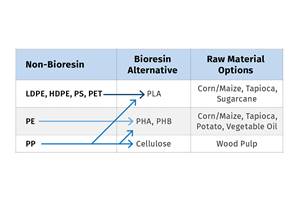Injection Molding Wood-Plastic Composites
Injection molders are just becoming acquainted with this new class of molding materials. It pays to learn some basic processing guidelines before jumping in.
Wood-fiber/thermoplastic blends have already made a name for themselves in extruded decking and fencing boards. Now they are moving into injection molding. Some injection molders are hesitant to experiment with new materials like wood-plastic composites (WPCs). Molders that have experimented with them have encountered a number of challenges, including inconsistent quality, inconsistent supply, and generally greater difficulty in working with WPCs in comparison with more familiar injection molding materials.
However, recent developments in the manufacture of WPC compounds have significantly improved the quality, consistency, and capability of this environmentally friendly material. In fact, the latest generation of WPCs can be run smoothly through traditional injection molding equipment with minimal adjustments to process settings and no physical hardware modifications. However, these materials do have some processing characteristics that distinguish them from familiar molding resins.
WPCs can be made with a variety of plastics, such as polyethylene, polypropylene, and polystyrene. What’s more, WPCs are just one category of an emerging family of materials that can be termed “thermoplastic biocomposites.” Besides wood, these biocomposites can utilize other natural fibers such as rice hulls, palm fiber waste, or flax. The molding guidelines outlined below apply specifically to wood-fiber/PP blends, but the general principles are believed to be generally applicable to other thermoplastic biocomposites as well.
Why use TP biocomposites?
There are many compelling reasons to create products and components out of thermoplastic biocomposites. As they contain up to 50% organic fibers, these materials offer injection molders a material option that is more environmentally friendly than typical petrochemically derived polymers. In addition to the “green” factors, thermoplastic biocomposites reduce a molder’s exposure to increasing petroleum prices, reduce the energy costs associated with production, and produce an end-product with great structural rigidity, an aesthetically pleasing finish, and new, highly marketable performance capabilities.
Wood/PP biocomposites tend to be lower in cost and weight than unfilled resins or glass-filled resins. WPCs are competitive with calcium carbonate-filled or talc-filled PP in cost, performance, and processing. But WPCs have the advantage of lower density, which reduces their effective cost and can be beneficial in transportation and other uses that put a premium on light weight. Applications can include automotive, construction, sports, toys, and other consumer goods.
Good candidates for injection molding with WPCs are parts with thick walls and ones that would benefit from excellent rigidity and dimensional stability. However, they should not be subjected to excessive impact, since WPCs are less shatter-resistant than some traditional injection molding materials. While WPCs are best suited to parts with thick walls, processors can compensate for thinner walls by blending WPC with additional neat polymer.
WPCs offer the combined properties of wood and plastic—excellent moisture barrier plus the ability to be screwed or nailed like wood, along with an organic look and feel.
Materials selection
To ensure the quality of finished components, it is critical to utilize high-quality thermoplastic biocomposite pellets. There are two main areas of the pellet composition to focus on:
- Dryness. Surface moisture should be less than 1.5% while internal pellet moisture should be less than 1%. Failure to control moisture content can result in visible splay and increased brittleness.
- Proper encapsulation and uniformity. Pellets should be clean and relatively consistent in size and shape. There should be no fines, chads, or streamers. In addition, there should be no powdery residue, which is a sign of improper equipment design or maintenance on the part of the pellet manufacturer.
One of the benefits of the current generation of WPCs is that they can be blended very efficiently with additional unfilled PP or other resin. In this manner, molders can still reduce their material costs and obtain the “green” benefits of the material while tailoring the wood-fiber level. Through blending, molders can achieve different performance characteristics—for example, improve the shatter resistance of components such as car bumpers or increase the structural rigidity of neat resin.
Processing guidelines
When molded using proper temperatures, speeds and a non-restricted flow path, WPC parts will exhibit uniform color and dispersion of wood fibers, minimal stress, smooth surfaces, and no evidence of gassing. The two most important principles to keep in mind for molding WPCs and other biocomposites are to avoid excessive heat and shear.
While traditional thinking might suggest that the wood fiber in WPCs would act as a flow inhibitor, the reverse is often true. Wood/PP actually flows very quickly at relatively low temperatures and pressures (generally similar to mineral-filled PP). As a result, injection molders can achieve significant energy savings. They can also achieve shorter cycle times and higher productivity due to reduced filling and cooling times.
Typical temperatures for molding wood/PP composites are 340 to 370 F (171 to 188 C) for the rear zone, 360-390 F (182-199 C) for the middle zone, 380-410 F (193-210 C) for the front zone, and 390-410 F (199-210 C) for the nozzle tip.
Molding pressures of course depend on the design of the part as well as the runner system and gates. That said, injection molding with WPCs generally requires less pressure than molding with traditional materials.
Filling speeds for WPC molding deserve attention. While the material tends to flow very quickly, it is important to avoid excessively short fill times as the material is shear sensitive. Increased heat due to overly fast fill times typically manifests itself in a telltale resin-rich streaking on the surface of the component. This streaking is remedied simply by slowing down the injection rate.
Given the lower temperatures used for molding WPCs, hold times are often lower than with regular materials.
The nozzle tip used in the molding process should have an orifice as close as possible to the diameter of the sprue to minimize shearing. Smaller tips may cause increased shear as well as discoloration caused by overheating of material as it enters the mold.
Injection molded WPC components are rather “natural” in appearance, with a light-brown tone and a uniform grain. However, a high-gloss finish is achievable, and the material can be dyed in various colors with excellent color uniformity.
Tooling tips
Typically, runner systems should have a generous flow path with minimal obstruction in order to minimize shearing of the material. Likewise, injection gates should be as large as the mold will permit. Gates that are too small will cause excessive shear and possible discoloration, as well as a resin-rich appearance at the gate region.
Ideally, parts should be gated directly into a thick section of the part. In cases where an edge gate is required, we recommend a gate width of at least two-thirds the thickness of the part wall.
Gates should be located so as to avoid joining of flow fronts and weld lines at points that may be susceptible to stress in use. Breakage is more likely to occur at such weld lines.
Molder training program
Since WPCs are so new to most injection molders, JER Envirotech has developed a molder training and accreditation program designed to qualify and educate customers on the proper use of its biocomposites. Through accreditation, injection molders (and extruders) gain the knowledge to obtain the best results from these materials. The end result is a consistently high-quality product that accurately reflects the skills and experience of the molder as well as the inherent quality of the biocomposite compounds.
Bill Hunnicut is v.p. of global sales and marketing for JER Envirotech in Delta, B.C., Canada. This article was prepared in collaboration with Spencer Brown at custom molder Baytech Plastics, Midland, Ont., and Scott Prill of compounder AlphaGary Corp., Leominster, Mass. JER thanks them and their colleagues for their help in developing data for this article.
Related Content
Resins & Additives for Sustainability in Vehicles, Electronics, Packaging & Medical
Material suppliers have been stepping up with resins and additives for the ‘circular economy,’ ranging from mechanically or chemically recycled to biobased content.
Read MoreHow to Optimize Your Molds and Hot Runners for Processing Bioresins
Demand for bioresins is growing in molded goods, particularly as a sustainability play to replace fossil-fuel based materials, but these materials are not a drop-in replacement for traditional materials. Molds and hot runners need to be optimized for these materials.
Read MoreBlend Amorphous PHA with PLA to Improve injection Molded Part Properties
Adding aPHA to PLA can boost a range of mechanical properties and expedite composting. Here are the details as well as processing guidelines for injection molding the blends.
Read MoreHow to Optimize Injection Molding of PHA and PHA/PLA Blends
Here are processing guidelines aimed at both getting the PHA resin into the process without degrading it, and reducing residence time at melt temperatures.
Read MoreRead Next
Beyond Decking: Wood Composites Branch Out
Extruded decking still drives the embryonic wood-filled plastics market. But injection and compression molded wood composites are coming on strong, and extruded profiles are moving toward more complex millwork shapes.
Read MoreProcessor Turns to AI to Help Keep Machines Humming
At captive processor McConkey, a new generation of artificial intelligence models, highlighted by ChatGPT, is helping it wade through the shortage of skilled labor and keep its production lines churning out good parts.
Read MoreLead the Conversation, Change the Conversation
Coverage of single-use plastics can be both misleading and demoralizing. Here are 10 tips for changing the perception of the plastics industry at your company and in your community.
Read More
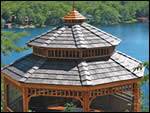


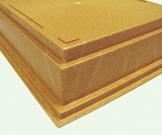
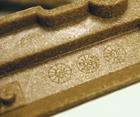
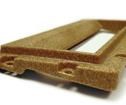
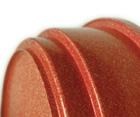




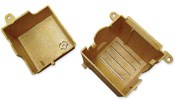






.png;maxWidth=300;quality=90)











